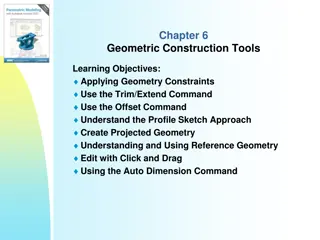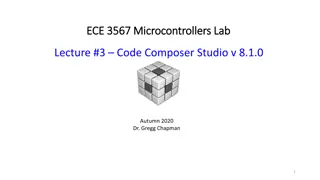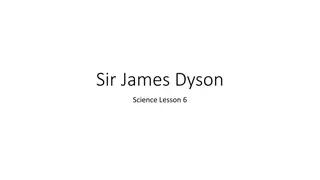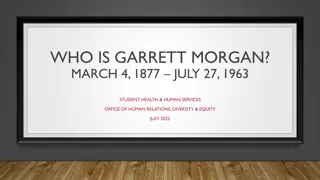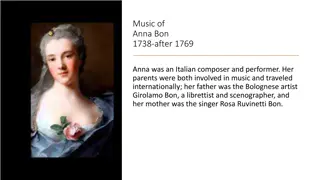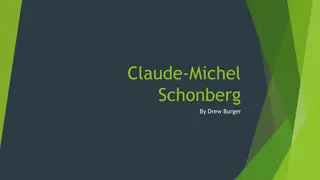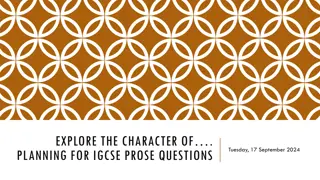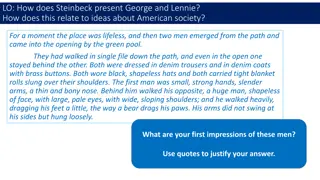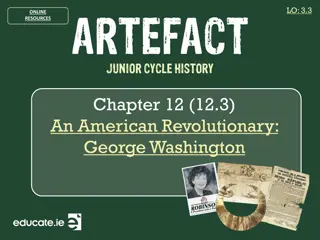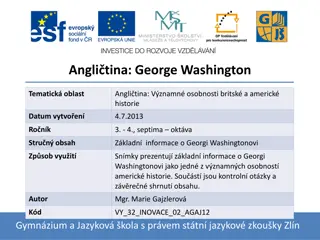George Antheil - Innovative American Composer, Pianist, Author, and Inventor
George Antheil (1900-1959) was a versatile American artist known for his forward-thinking compositions, piano performances, writing, and inventions. Notable for his involvement in developing a secret code system during WWII, his works like "Le Ballet Mécanique" showcase his innovative approach to music and art.
Download Presentation

Please find below an Image/Link to download the presentation.
The content on the website is provided AS IS for your information and personal use only. It may not be sold, licensed, or shared on other websites without obtaining consent from the author.If you encounter any issues during the download, it is possible that the publisher has removed the file from their server.
You are allowed to download the files provided on this website for personal or commercial use, subject to the condition that they are used lawfully. All files are the property of their respective owners.
The content on the website is provided AS IS for your information and personal use only. It may not be sold, licensed, or shared on other websites without obtaining consent from the author.
E N D
Presentation Transcript
George Antheil 1900-1959
FUN FACTS ABOUT ME! George Antheil was an American forward-thinking composer, pianist, author and inventor Born in Trenton, New Jersey Helped to invent a secret code system (spread spectrum) to help the allies defeat the Germans in WWII. Never graduated high school Early inspirations: Ernest Bloch, Leo Ornstein, Paul Rosenfeld, John Marin, Alfred Stieglitz, Margaret Anderson, and Georgette Leblanc The Bad Boy of Music (1945), he was "so crazy about music", that his mother sent him to the countryside where no pianos were available.
Le Ballet Mcanique (1924) Dadaist post-Cubist art film conceived, written, and co-directed by the artist Fernand L ger in collaboration with the filmmaker Dudley Murphy Although the music was originally made for the film, the two works were not put together until the 1990s because the music was 30 minutes and the film, 19. http://www.youtube.com/watch?v=H_bboH9p1Ys
The sonata rondo form follows an [AB] [AC] [AB] [Coda] pattern, where A is a first theme, B is a second theme, and C is a middle section loosely related to A and B: A Theme 1 starts at the beginning of the piece. It is easily identified by the oscillating melody in the xylophones. It moves through rhythmic and intervallic variations until a bridge into the next theme (measure 38 in the original scoring). B Theme 2 (m77) features the pianolas, supported by drums. The melody is mostly built from parallel series of consonant chords, sometimes sounding pentatonic but often making no tonal sense at all. Antheil uses pianolas for things that would be difficult for human players (a 7-note chord at m142, for example). A Xylophones return in triple meter to recall Theme 1 (m187). This is not strictly a repeat of Theme 1 but another variation and development upon it. This section descends into increasing chaos (starting m283) which signals a transition into part C (m328). C The xylophones and pianolas play a new tune. They stay in better rhythmic agreement here and give a more ordered feel to this section. The xylophones eventually cut out to make way for a serene pianola passage. A B The xylophones return (m403) with the theme from the beginning. There are differences from the original AB part, including new bitonal passage (m530) and miniature round (m622) between xylophones and pianolas. The pentatonic melody, hinted in part B, returns (m649) and gets developed in the context of the round. Coda A startling change occurs when all instruments cut out except for a lone bell (m1134). This signals the beginning of a very long and thinly textured coda. It alternates between irregular measures of complete silence and pianola with percussion. The measures of silence get longer until the listener begins to wonder whether the piece is already over. Finally, there is a crescendo of pianola, a flurry of percussion and a bang to mark the real ending. The score indicates the last measure of the piece to be ended with the pianos and drums only, but modern performances have the xylophones joining back in and doubling the melody of the pianolas to create a more firm, solid, and recognizable ending.
List of Works http://www.schirmer.com/default.aspx?tabid=2419&State_ 2872=3&ComposerID_2872=35&CategoryID_2872=0
Legacy Henry Brant and Benjamin Lees https://www.youtube.co m/watch?v=HEBKBc0DA D0 https://www.youtube.com/wa tch?v=fyglGX8fPmE
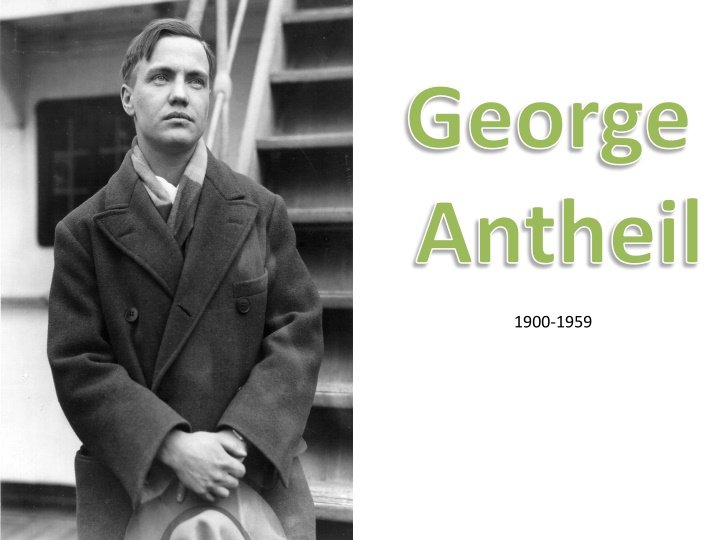

![❤[PDF]⚡ Civil War Talks: Further Reminiscences of George S. Bernard and His Fel](/thumb/20551/pdf-civil-war-talks-further-reminiscences-of-george-s-bernard-and-his-fel.jpg)
![❤Book⚡[PDF]✔ Doing the Impossible: George E. Mueller and the Management of NASA’](/thumb/21684/book-pdf-doing-the-impossible-george-e-mueller-and-the-management-of-nasa.jpg)

